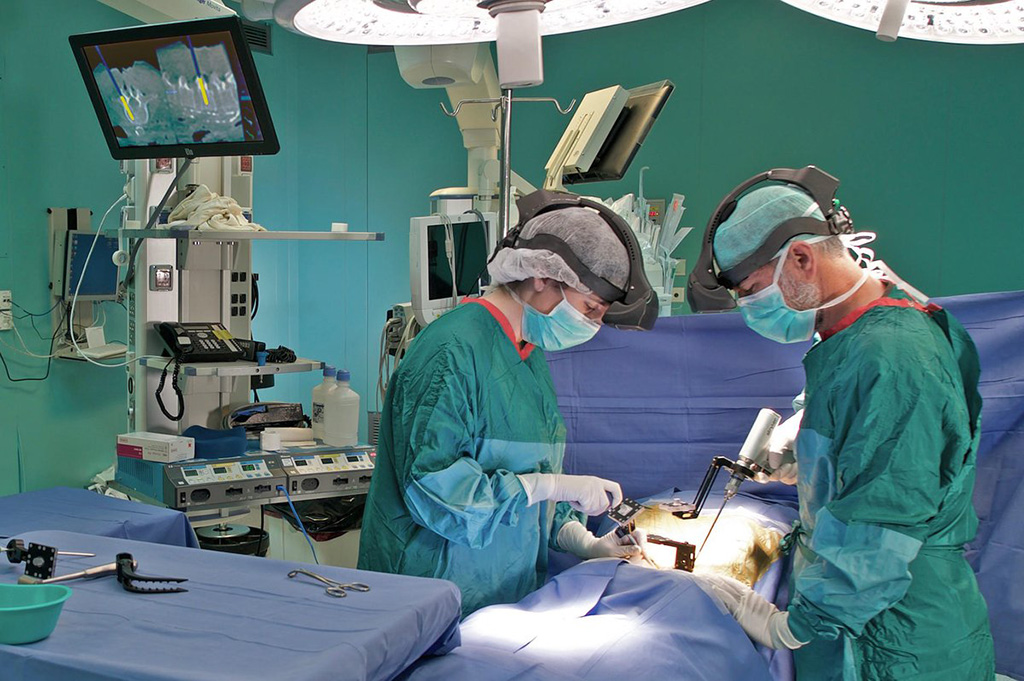AR Headset Provides Surgeons with X-ray Vision
By MedImaging International staff writers
Posted on 07 Jan 2020
An augmented reality (AR) system helps surgeons visualize a patient’s three dimensional (3D) spinal anatomy during a procedure.Posted on 07 Jan 2020
The Augmedics (Yoqneam, Israel) Xvision Spine System (XVS) is based on a head-mounted AR display that projects a 3D image of a patient’s computerized tomography (CT) scans onto the surgeon’s retina. Instead of having to look over at a monitor screen, surgeons can use instruments and implants while looking directly at the surgical area. The wireless headset also features a camera that helps determine the position of surgical tools, with a trajectory superimposed on the CT data. All of the components are housed in the lightweight, wireless headset.

Image: A surgical headset uses AR for surgical guidance (Photo courtesy of Augmedics)
“We have the same fundamentals as traditional surgical navigation systems, meaning that we use reference markers on the patient. We do a registration with a preoperative or intraoperative CT scan and use an optical tracker,” said Nissan Elimelech, CEO of Augmedics. “All of the information is displayed in front of him or her, on the patient, in a very real 3D display. With traditional navigation, the surgeon needs to reference all of the information on a distant 2D screen, and will need to look away from the patient to navigate his or her instruments.”
In a laboratory study conducted in cooperation with Rush University Medical Center (Rush; Chicago, IL, USA), researchers placed 93 screws in the thoracic and sacro-lumbar areas of cadavers, achieving a 98.9% accuracy when comparing the actual position and trajectory of the screws versus the virtual position.
“The ability that Augmedics’ Xvision provides to visualize the patient’s spinal anatomy in 3D, coupled with live CT images as a retina display, is game changing,” said professor of orthopedic surgery Frank Phillips, MD, of Rush, who participated in the study. “The efficiency and accuracy this augmented reality technology enables in placing spinal implants without looking away from the surgical field, as well as the ability to “see the spine” through the skin in minimally invasive procedures, differentiates the Xvision from conventional spinal navigation platforms.”
AR is a term for a live direct or indirect view of a physical, real-world environment whose elements are augmented by computer-generated sensory input. It is related to a general concept called mediated reality, in which a view of reality is modified--possibly even diminished rather than augmented--by a computer. As a result, the technology can enhance the perception of reality.
Related Links:
Augmedics
Rush University Medical Center














